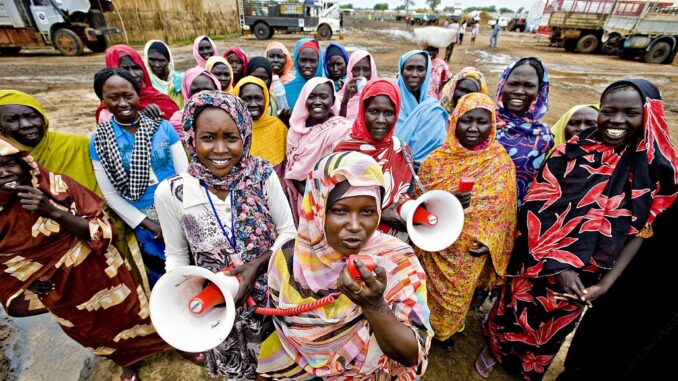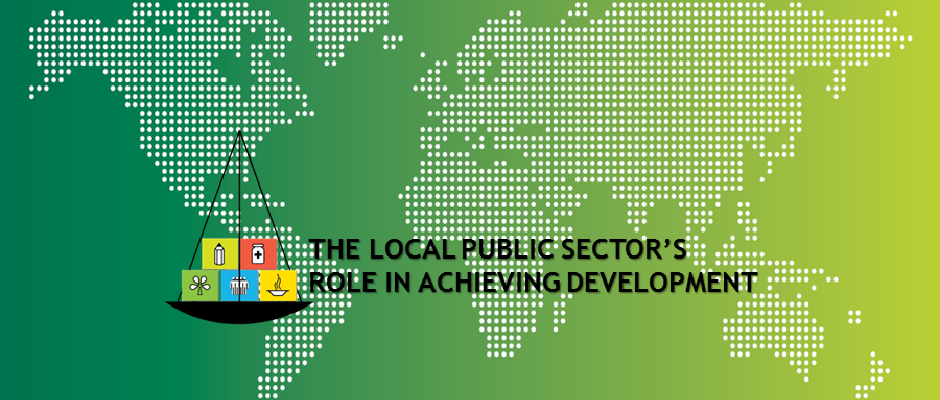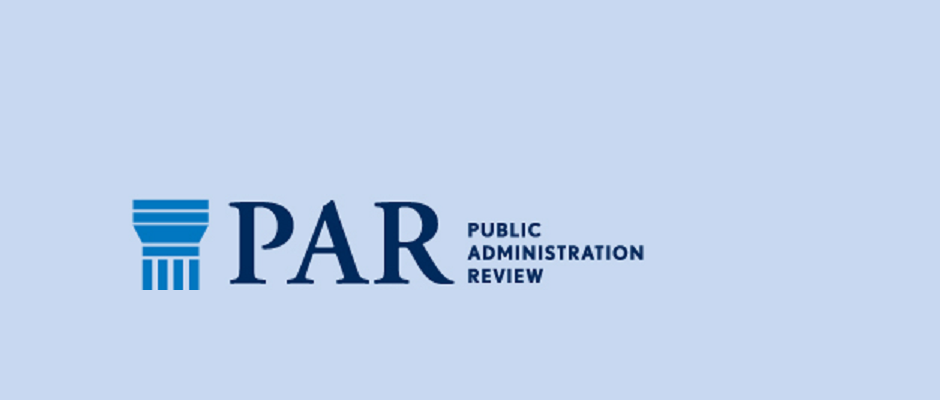
Community-led Development (CLD) is not a new idea. Even before the pandemic demonstrated why the world needs CLD, terms like localization, community-driven development and locally-led development had begun to gain traction in the development discourse. And with them came questions around impact and efficacy. In 2019, the Movement for Community-led Development, a global consortium of over 70 INGOs and hundreds of local civil society organizations from around the world, began a collaborative research to unpack what happens when we put communities front and center in development. The goal was to systematically review CLD programming from around the world to understand where CLD had worked, how, why and for whom. But before we could delve into questions of impact, we needed to arrive at a common understanding of CLD and what organizations are doing as part of their CLD programming.
The purpose of this multi-phase research was to understand not just the impact of CLD in different contexts, if any, but also the human change processes that lead to this impact. To do so, the diverse and multi-organizational research team had to first arrive at a common understanding of CLD and map the current state of CLD programming.
MCLD’s study team collected over 400 evaluation and program reports from 29 MCLD members, which were self-identified as being community-led by the implementing organizations. Within these reports, the team assessed the presence of CLD characteristics and how they varied with socio-political and economic contexts, program length, funding, focus and activities. We sought to answer the following questions:
What are organizations doing as part of their CLD programming?
How does the nature of CLD programming vary with context?
The report outlines the current landscape of CLD practice based on an analysis of evaluation and project reports of 173 programs across 65 countries. It does not look at the question of impact. Rather, it seeks to identify the current practice of CLD programming—its strengths and weaknesses—so that implementing organizations and funders can course-correct where needed.
The team followed a process of inductive reasoning to arrive at the 11 characteristics that define CLD. These were: (1) Accountability; (2) Adaptability; (3) Capacity Development; (4) Collaboration; (5) Collective Planning and Action; (6) Community Assets; (7) Community Leadership; (8) Participation and Inclusion; (9) Sustainability; (10) Transformative Capacity; and (11) Voice.
Recognizing that CLD will look different depending on context, the team designed a rubric to reflect how these 11 characteristics would appear in the program lifecycle. This rubric contained 9 dimensions and provided a benchmark for measuring progress towards them, even as it acknowledged the diversity and varying scope of CLD programming. It was tested for inter-rater reliability and applied to the 173 programs shortlisted for the study. Both qualitative and quantitative analysis was carried out to bring in analytical rigor.
The biggest strength of the study is the diversity of experience of its multi-organizational research team, representing different streams of CLD programming. The study included a vast array of reports across sectors, methodologies, continents and organizations. Yet, the sample was limited by both language and membership of the Movement. It is also important to remember that the team relied on data from different types of program documents, with varying purpose and detail.
Absence of evidence is therefore not evidence of absence and this landscape of CLD programming is limited by the information contained in the documents in the study. Finally, this study reports on the nature of CLD programming, not on its impact. It does not claim any correlation between the presence of CLD characteristics in a program and its impact.
Findings
Programming Duration: On average, CLD programs in the study ran for 5.23 years – 45% programs ran for less than 3 years. It must be noted that many short-term programs were in communities where the implementing organization or its partners had already been present through other projects. Despite this there is a clear correlation between program duration and the presence of CLD characteristics. Programs that ran for 3 years showed less CLD characteristics than those that ran for 7 years or more and this result was statistically significant.
Types of CLD Programming: There are six types of CLD programs in this study based on their principal focus and activity: Service Delivery, Agency and Empowerment, Service Delivery and Agency, Capacity Development, Policy Advocacy and Social Accountability.
Presence of CLD Characteristics: On average, programs in the study reported 6 out of the 9 dimensions outlined in the rubric. Participation, Inclusion and Voice (Dimension 1) was present in about 93% reports and Facilitation (Dimension 3) in over 97% of the reports. Accountability (Dimension 4) was the least present dimension, followed by Sustainability and CLD-congruent monitoring and evaluation practices. Further, a sub-component wise analysis of the dimensions revealed that despite the high presence of participation and facilitation, most CLD program reports contained very little evidence of specific aspects of these dimensions. For instance, only 40% program documents report that the community plays a role in needs assessment or program design. Less than 11% reports in the study show any evidence of flexibility in facilitation to meet community needs.
Who is Included in CLD Programs? While almost all reports scored on presence of participation and inclusion, a qualitative analysis revealed that for most programs inclusion was limited to the participation of women or people living in extreme poverty. Unless they focused on specific vulnerable groups like people with disabilities or refugees, programs did not report participation of marginalized groups. Notably missing were LGBTQ communities, people with disabilities and people belonging to religious or ethnic minorities. Moreover, 36% of the documents did not have any gender component in their programming or evaluation.
Gender: Programs in the study reported a heavy reliance on women’s participation individually or through community groups. While this is important for addressing harmful gender norms and ensuring inclusion of women in public and political spaces, it does raise the question of women’s time poverty, particularly in the short run.
Sectoral focus and integrated programming: Programs that focused on governance reported up to 20% or 1.8 more CLD characteristics, while those that focused on health reported up to 17% or 1.6 more CLD characteristics than those that did not. On the other hand, programs that focused on economic empowerment reported a significantly lower number of CLD characteristics. While the difference in the presence of CLD characteristics in various programs can be attributed to many reasons, including reporting requirements and donor focus, they need to be examined closely.
About 54% of the study sample comprised programs that were considered integrated (co-located, multi-sectoral interventions or sectoral interventions that took a holistic approach) and these programs reported a significantly higher presence of CLD characteristics. It must be noted that many governance and health programs fell into this category, while economic empowerment programs were often single sector, capacity development or service delivery programs, with shorter durations.
Program participants: Programs that had youth participants reported a significantly higher presence of CLD characteristics than those that did not. Over 80% of the CLD programs in the study report working through existing or new community groups. These groups are often used for saving, information dissemination and training, in addition to serving as platforms for community mobilization and organization. Programs that created new community groups or worked with local government functionaries and community leaders showed a significantly higher presence of CLD characteristics than those that did not.
Funding Agencies: The U.S. government was the single largest funder of the programs analyzed, followed by the Department for International Development (formerly DFID, now the Foreign, Commonwealth and Development Office). On average, reports for programs funded by bilateral agencies and through private funding (including investors, child sponsorship, crowdfunding) showed a high presence of CLD characteristics. Programs funded privately also ran for significantly longer durations than others, perhaps because they were not subject to donor restrictions.
Context: CLD programs in humanitarian situations differed from those in development settings in duration and activities undertaken. Programs in humanitarian settings were mostly service delivery oriented or service-delivery and empowerment oriented as their immediate focus was to provide relief. These programs also often ran for shorter durations. While there were broad trends, the study did not find any significant impact of socio-economic and political context on the presence of CLD characteristics. However, this does not mean that context does not matter. It only means that our sample did not have sufficient information on context for us to undertake this analysis.
Visit the website of the Movement on Community-Led Development in order to read the report on Unpacking Community-Led Development.





